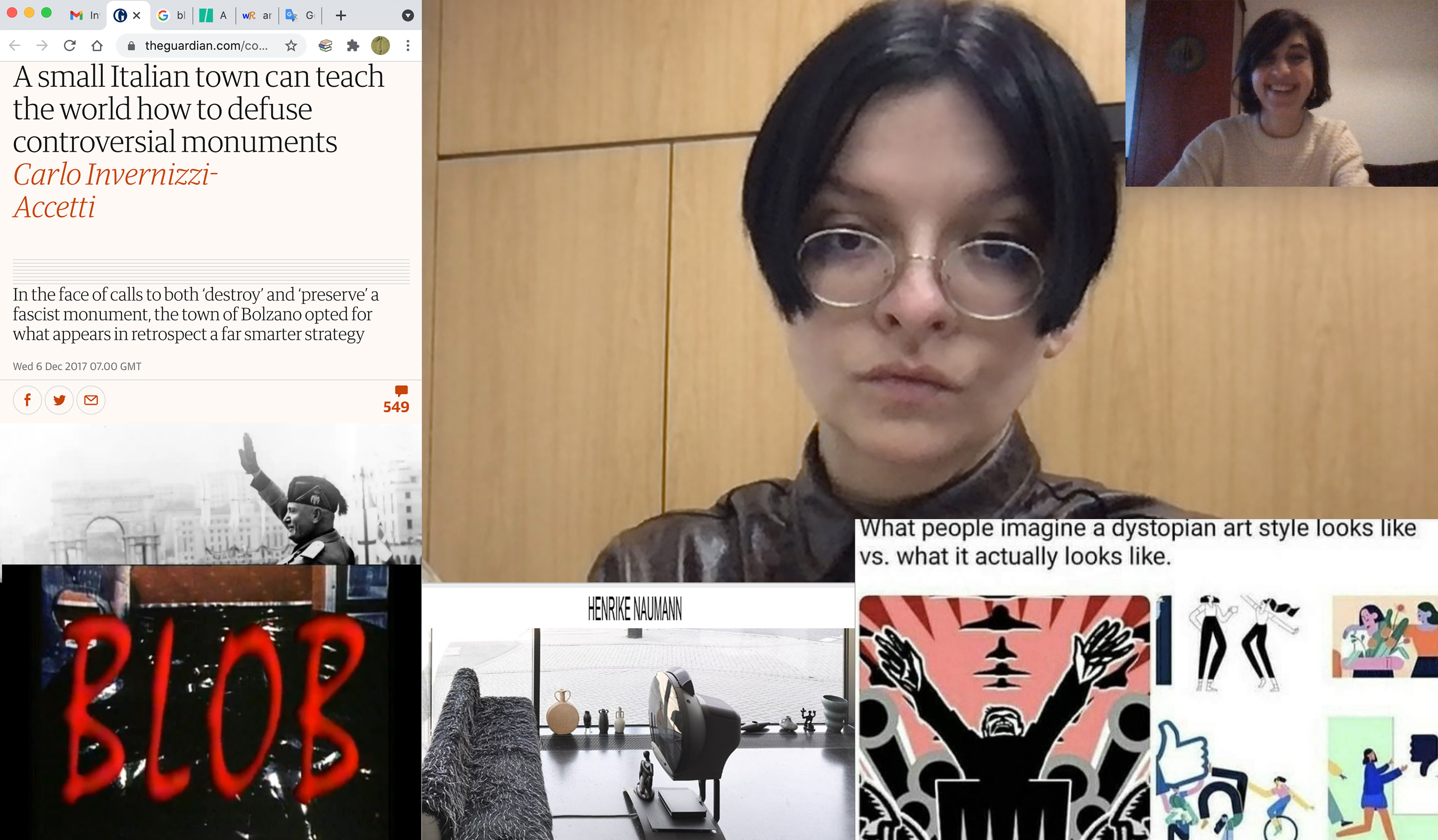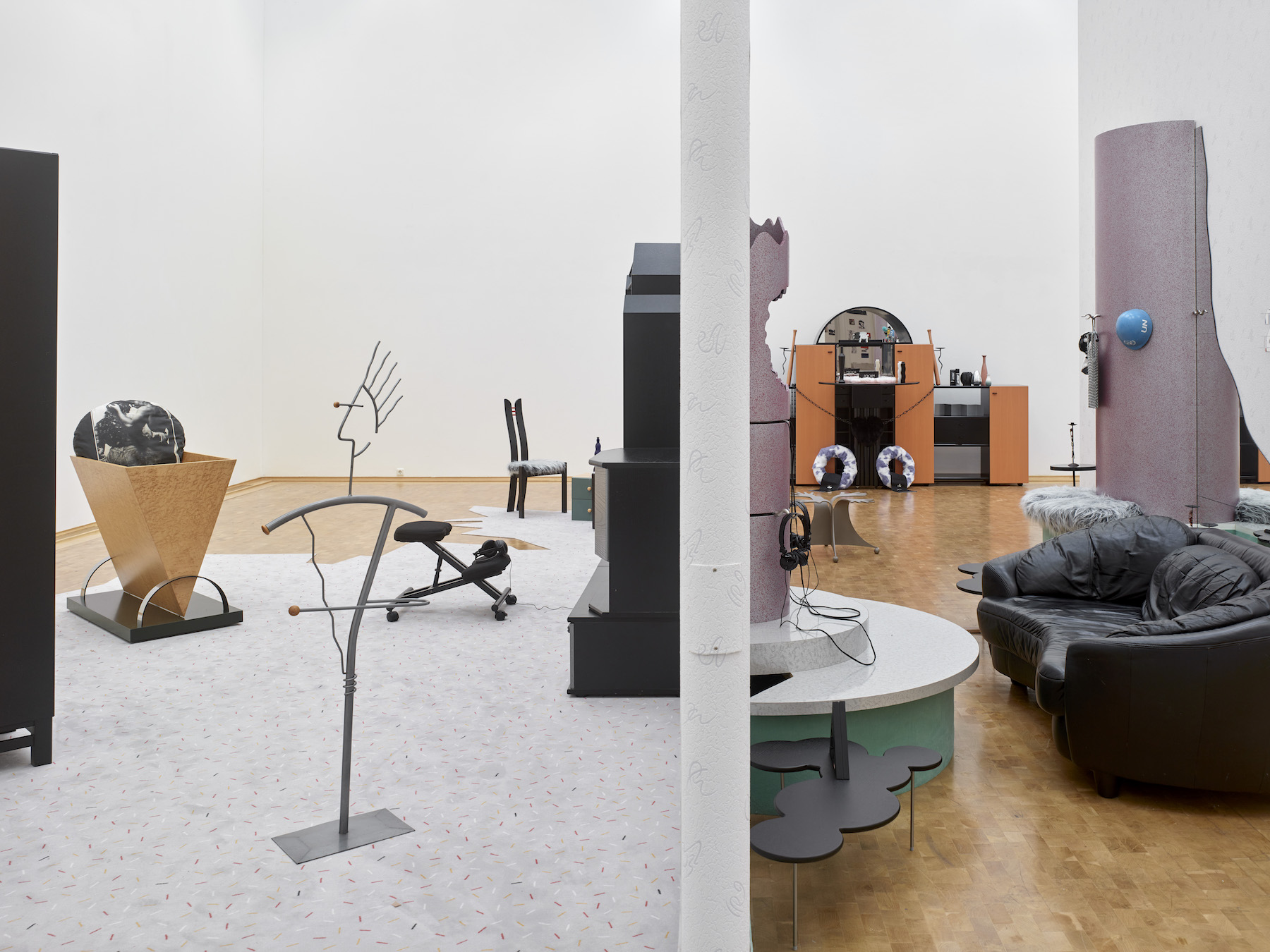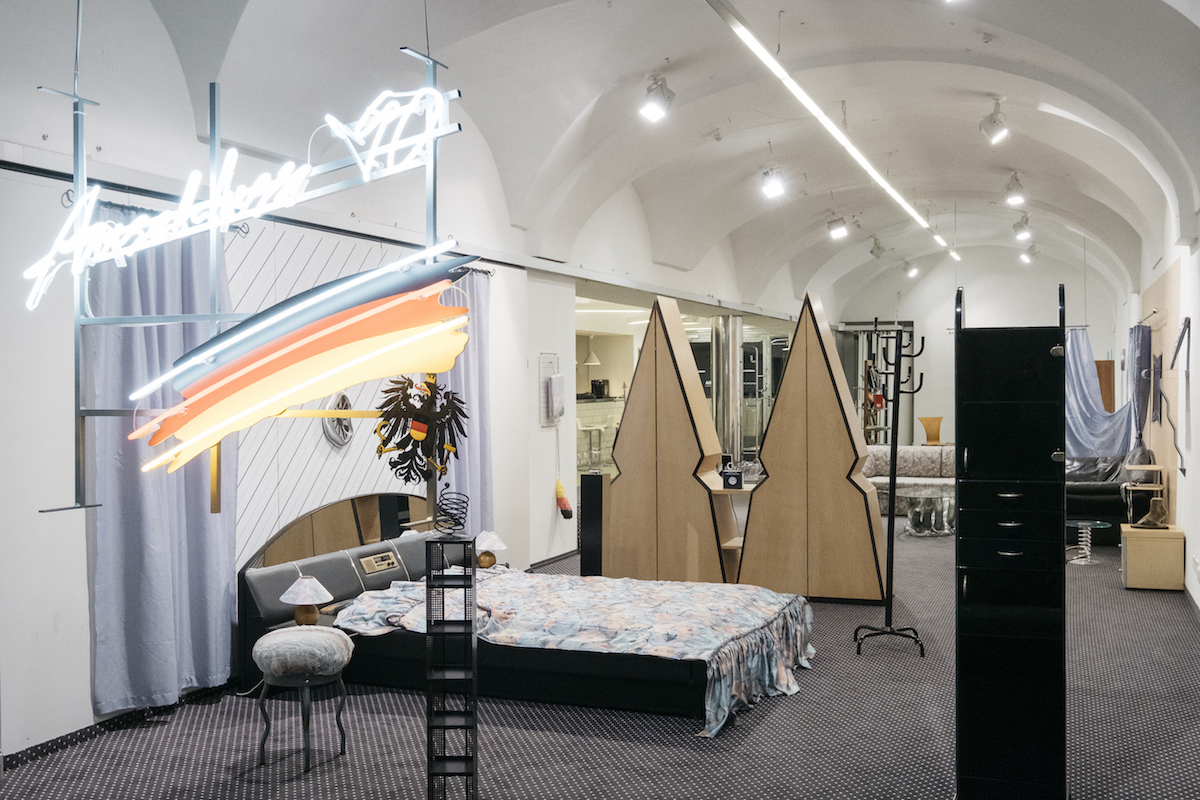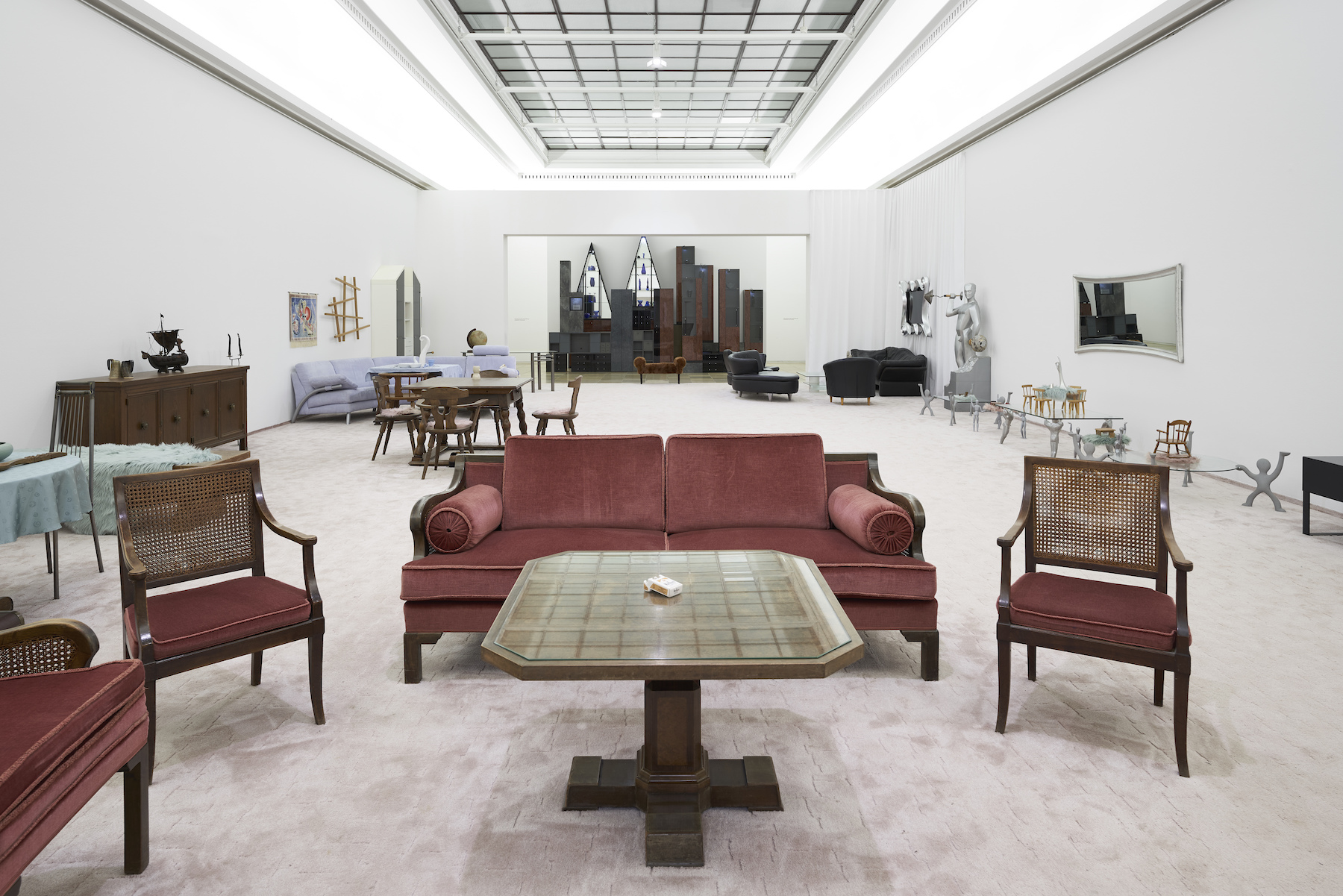It's a date: Henrike Naumann

“It’s a date” is a column of Contemporânea written by Alberta Romano dedicated to studio visits with artists from Lisbon and from all over the word, both in person and online.
Episode N8:
Henrike Naumann
Lisbon > Berlin, November, 2021
When the practice of the artist you have met is so layered, full of possible ramifications and so connected to your own sensitivity, thinking of an introduction that lives up to the artist’s work is a very difficult undertaking.
This is the case of Henrike Naumann, with whom I had the pleasure to talk with for the first time via Skype a few days ago. Part of the pleasure of this call lies in the authenticity with which it took place. Henrike wanted to tell me about her world, her research, her childhood, without ever being contrived, as if we had known each other for some time; we exchanged ideas, memories and some advice. However, the greatest satisfaction (or maybe just the most selfish one) was being able to say out loud: "I knew that she would have been a lovely human being, I knew it from the first time I saw one of her works".
But let's start from the beginning.
Henrike Naumann was born in 1984 in Zwickau (GDR), in a city that was the stronghold of the National Socialist Underground and part of a country that practically doesn’t exist anymore.
As a matter of fact, Zwickau is also known to have been the headquarters of Trabant, the car company that produced what was considered to be the car of the East German people, fabricated from 1957 to 1991 (it only lasted one year after the reunification of Germany).
This is to say that the culture that must have surrounded Henrike during her growth was not only influenced by a staunch right ideology, but suffered from a very strong ideological closure, which her work today tries to open by questioning every element that made that closure so deeply rooted in that society.
In her work she combines video and sound with immersive installations mainly composed of furniture and decorative objects. All the pieces that compose her huge installations are the result of careful research done on site, which allow her to hear more about the history of a place while navigating the predominant aesthetics of each period.
Henrike: “I come from a background of stage design and film scenography and when I started to do installations in the art field I brought with me the fascination for furniture and objects.
Probably because I like to speak about people but I am not so interested in showing them, I’d rather show the spaces that host them and that shape their whole realities.
But something else I took with me from my scenography background is the relationship between documentary and fiction. I am fascinated by how history can be shaped by what we want to see in it or by what we let others see.”
She told me about her work “DIE MONOTONIE DES YEAH, YEAH, YEAH”, (2020) in which the video present in the installation merges together excerpts from GDR teaching materials with sequences from the animated series “The Flintstones”. The boundary between reality and its idealization is more than blurred, the two dimensions blend together, underlining all the lies of one and the simplifications of the other.
Alberta: “When did you start to be interested in this kind of historical analysis? But most of all, how much does nostalgia influence your research (if it does of course)?
Henrike: “Going back to a period in the past is not just a matter of nostalgia, but it’s also a way to revisit something that you knew but never paid attention to because at the time it was just ‘normal’ for you. When I was an early teen, for example, I remember that I was already fascinated by ‘the past’, doing research about the 70s and 80s and then suddenly realizing that one day people would have said ‘the 90s’ and I asked myself «What could that ever mean? Everything here looks so normal». So that’s when I started to look differently at what was before me. Of course, it is difficult to talk about the present, but we can start looking back just a little bit, even just 10 years, and that will give us the possibility to discover something we didn’t notice before.”
Alberta: “Sure, and doing that I am sure you can acquire the tools to also read your present like your IKEA furniture for example”.
Henrike: “For sure!”
Alberta: “By the way, you told me when, but I am curious to know why did you feel the need to interpret the reality that surrounded you?
Henrike: “In my childhood questions such as ‘How can I explain how I see the world to someone who sees it very differently from me?’ or ‘What is it that makes me so convinced of the things I believe in?’ were really predominant, because I was coming from East Germany where everything was so different from the West. That’s when I also realized how much I was embedded in certain convictions and how they can shape our entire life. Think of Nazism, all the people I know in Germany have had a grandfather who was somehow involved with Nazism, it is so close that it has grown in our families and in our society and unavoidably influenced them. And this is everywhere, no one grows up in a neutral environment.”
Alberta: “Oh, tell me about it, as Italian, I think I perfectly know what you are talking about. And, correct me if I am wrong but I can imagine how difficult it can be to analyze the past when it is hidden under a veil of hypocrisy….”
Henrike: “That’s for sure. Indeed, when I was in Rome I was surprised to find so many gadgets with Mussolini’s face on it, I even found a book called ‘Eat with the Duce’ or something like that. It’s incredible, I was not expecting to still find so many things about him!”
Alberta: “Yes, I know, we have plenty of them, especially in flea markets! But this is totally normal, for example in Predappio, the city where Mussolini was born, there are tons of souvenir shops dedicated to his person and of course they keep producing new items every year, like calendars for example. My grandma had some of them, she was a huge fan of ‘the old times’. That’s because Italians never really condemned Fascism. After the war they preferred to wash their consciences with the myth of resistance, and suddenly they all became partisans or sons of partisans at least. There has never been a blatant condemnation of fascism, it has only been put in ‘mute’ for a while, as we can see today”.
Henrike: “In Germany Nazism is a taboo. Buildings, monuments, sculptures, almost everything related to that period has been destroyed.”
Alberta: “Not in Italy. My Highschool in Pescara has a shape of a big M, they just removed the symbols, but they kept everything else. Which, I mean, I think it’s amazing. I think stratification is the key, neither destruction nor silence. Look, for example, at the massive bas-relief of Benito Mussolini that was modified in Bolzano, they even talked about it on The Guardian”.
Henrike: “Sure, and that’s because reality is complex. I realize more and more how I am not interested in drawing a line on the floor and saying ‘this is evil’ and ‘this is good’ and me as an artist in a ‘critical-good-side’.
Often exhibitions that deal with the topics I am working on are done in this way and I don’t think this is interesting, it’s better to show the complexity of reality. Instead of showing how fascism is evil, I think it is better to question the fascist that is inside each of us.”
We could have gone on talking about it for hours, but in the meantime, I let Henrike promise me that when she will do a work somehow related to Italy, she will have to contact me.
Alberta: “I have a last question for you. Since you always put at least one tv in your installations, I was wondering if it is just a way to project your video works or if it’s because you can’t think about a ‘domestic’ space without a tv?”
Henrike: “Hahahaha! Actually, I was always obsessed with tv, I have to say, and when I was young I was living in the countryside with a lot of beautiful nature, but I’ve always wanted to watch tv instead of playing in the woods. When I was not allowed to watch tv I was building my own out of planks, also creating tv magazines related to the programs I was making up.
I remember that in elementary school we had to draw our favorite profession (I probably already had some sense of humor) and the fact is that I drew a person sitting in front of a conveyor belt where tvs were passing and this person’s job was to put antennas on top of each tv.”
We burst out laughing.
Very few words have the ability to shoot into my heart instantly and one of these is: "tv".
I talk to her about Blob, the Italian program I would have always liked to work for, which is somehow also related to this mix of reality and fiction we were talking about some minutes before.
Then the conversation proceeds, we talk about upcoming projects, we exchange new anecdotes and memes, but the time of our call (probably one of the longest I've had for Contemporânea, certainly the densest) is running out and we have to say goodbye but not before have planned an aperitivo in Venice.
Again, when you know a beautiful person and a well-structured artist, you wish you had known that person before, but you can also be sure that you will see each other soon.
Proofreading: Diogo Montenegro.


Henrike Naumann was born 1984 in Zwickau (GDR). Growing up in Eastern Germany, Naumann experienced extreme-right ideology as predominant youth culture in the 90s. Her work reflects on the history of right-wing terrorism in Germany as well as on today‘s broad acceptance of racist ideas. She looks at the mechanisms of radicalization and how they are linked to personal experience and youth culture. Naumann explores the friction of contrary political opinion through the ambivalence of personal aesthetic taste. In her immersive installations, she combines video and sound with scenographic spaces. In recent years she widened her focus to the global connectivity of youth cultures and the reversion of cultural othering. Notable exhibitions include solo shows at the Belvedere 21 in Vienna, Kunsthaus Dahlem in Berlin, Museum Abteiberg in Mönchengladbach and Galerie Wedding, Berlin, as well as participations at the Busan Biennale (2018), Riga Biennial (2018), Steirischer Herbst, Graz (2018), 4th Ghetto Biennale at Port-Au-Prince (2015), and the 3rd Herbstsalon at Maxim Gorki Theatre Berlin (2017). Henrike Naumann lives and works in Berlin.
Alberta Romano is an art historian and contemporary art curator born in Pescara, Italy in 1991. She is currently the curator of Kunsthalle Lissabon. Since 2017 she has worked with the CRC Foundation in Cuneo, coordinating the acquisitions for their contemporary art collection. After graduating with a BA in Art History at La Sapienza in Rome and with an MFA in Visual Cultures and Curatorial Practices at the Academy of Fine Arts in Brera in Milan, she attended the curatorial program CAMPO16 at Fondazione Sandretto Re Rebaudengo in Turin. She has written for Artforum, Flash Art, Contemporânea, and Kabul Magazine, among other magazines.


Henrike Naumann. 14 Words, 2018, installation view at MMK Frankfurt, photo: Axel Schneider. 2000 2018, installation view at Museum Abteiberg, photo: Achim Kukulies. DDR Noir, 2018, installation view at Galerie im Turm, photo: Eric Tschernow. Anschluss 90, 2018 installation view at Steirischerherbst, photo: Clara Wildberger. Das Reich, 2017, installation view at Herbstsalon, photo: Ladislav Zajac. Ruinenwert, 2019, installation view at Haus der Kunst, photo: Ulrich Gebert. Courtesy of the artist.


